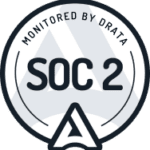Mike Thorton talks with Mike Aiton
Listen to the Podcast here: https://itunes.apple.com/gb/podcast/pro-tools-expert-podcast/id501987225
Mike Thorton
I wanted to talk a little about the technology we are conducting this interview on, because i’m in Manchester in england and you’re down in Twickenham, near London and unlike our normal podcast, what everyone is listening to, it is coming up to me and being recorded in my Pro Tools: not via Skype or via telephone, or even via an ISDN line, but we’re using a piece of software called Source-Connect. Now I know Mike, you’ve been across this piece of software since it first came out.
Mike Aiton
Since it’s birth!
Mike Thorton
Indeed. Give us an insight into what this is about and how you use it.
Mike Aiton
I got involved very early, actually a beta tester with them. A company called Source Elements formed by a couple of mixers over in New York (editor: Chicago actually!) and they brought in a very clever woman, Rebekah to co-ordinate this concept of what they wanted to be able to do. Which was, to be able to record voiceovers via the Internet. Not having to have ISDN lines. It was a bit revolutionary when they started because the Internet wasn’t that fast, but we were still at the stage where ISDN was becoming a bit of a pain! Telecom companies didn’t particular want to be installing ISDN lines everywhere, you’ve also got the other problem that everyone, everywhere, has got a different codec. And how many times have we sat listening to The Today Programme, on Radio 4, and think, Oh! Er, they’re not on the line, it’s dropped. You know, ISDN does have a lot of drop-out.
Now, this particular product, Source-Connect, uses some very very clever technology from the Fraunhofer Institute. Now, I’m not a software programmer, I’m not an expert on audio coding, but I don’t sit on my ears either. For me, I’ve sat down and I’ve listened, and I don’t think, at their top bandwidth, you can hear the difference between it and a microphone. It really is stonkingly good. And I always found, with ISDN, I could hear the difference. Something about it I didn’t like.
Mike Thorton
It’s old technology, it’s old data compression technology, isn’t it. Because ISDN is using MPEG2.
Mike Aiton
It is, and that’s quite old technology now. Where, I believe Source-Connect uses MP4 technology, and a particular version of MP4 (editor: Yes! We use AAC-LD, a component of MP4). Now the genius, the absolute genius of Source-Connect, is as follows – now, if I give an example: when I was working for ESPN, we used to have need to have promo sessions voiced by Italians and French every month. Now what we were having to do was fly a producer out to Paris and another one out to Rome. They would fly the night before, go and do a heavy days-long session, come back the next day. So they were out of the office for kind of 3 days. They had flights, hotel bills, studio at the other end. It was time-consuming, it was expensive, it just wasn’t a very good system.
We started using Source-Connect and we started with, especially with Zerodibi, in Milan. I went over to Milan, they were early adopters of the technology as well, we met up with them and some other studios as well, and we started by just recording the audio and then sending it back and that was all we could do at the early stage and that worked very well except the voice artist always said well, you have to describe the pictures to us, what am I am I voicing, what is my tone? And we’d get into this long lengthy descriptive process. Reminds me of that lovely quote, by Frank Zappa I think, who said talking about audio is a bit like dancing to describe architecture. And, you know it’s a very convoluted process! So what we actually wanted them to be able to do was to see the video, and play it at the same time, as if they were in my booth in London.
So, what Source Elements developed was this ability called Remote Transport Sync. Now what I would do is prepare a session, I would have a QuickTime movie in the session, and I would make it a fairly small QuickTime, I was predominantly using MP4s because it’s not as heavy as H.264 for the host processor although it gave quite small files so it seemed to be quite a good codec. And in the timeline I would put the interviews and the music and everything for the promo, and then I would put that on an FTP server, Milan would download it so they would have exactly the same session as me. I would then with Source-Connect engage this mojo called Remote Transport Sync and what Remote Transport Sync is very clever: you need to probably sit in a dark room and have a think about this. The problem with remote working is, when I hit play on my end and I want the other end to go, what’s happening with the timing? Because everything take a finite amount of time to get to there and back so how would I control his transport?
Now, if you’ve worked in post production you’ll be familiar with 9-pin working. The way you work with a 9-pin machine is in Pro Tools, you’ll hit play. Now what you’re actually doing is you’re telling that 9-pin VT machine to go into play. Which it does, off it goes into play. When it hits lock, and it’s stable and it’s lined its frame edges to the black and burst signal it gets, it goes, oh ok, I’m resolved, I’m playing. What then happens, Pro Tools then locks to that incoming code. So, you’re giving the VT machine stop and go commands but it’s sending you ‘where I am’ commands, which you’re locking to. So what Source-Connect do with Remote Transport Sync is very clever. They send out play commands to the session in Milan, which then reports back, Ok, I’m going, this is where you need to be. But the clever bit is that it calculates what the offsets are for you. In the old days if you were doing this with ISDN you’d put a tone blip and a flash on your video. You’d send them the blip, you’d wait for it to come back, you’d record and you’d go, hm, the delay is about 14ms. So then you’d have to put an offset everywhere. So you’d record it coming in and once you’ve recorded it go now I’ve got to move it to put it back in sync or are you able to generate a code with an offset to send to them or can they put an offset at their end when they follow. And it all gets very complicated and offsets can drift, because of the speed of the connection can vary. Which is all to do with locking and your ISDN box and everything. The other way you can do it is send LTC up the second leg of the ISDN box, Linear Time Code, now that, you can get problems with that because timecode is a very small-bandwidth signal and it doesn’t like some of the compression technology. What Dolby called ‘spectral masking’ can tend to happen with a lot of coding (I might be talking technical nonsense here so excuse me with my phrases). Your ear cannot hear certain things because it’s masked by something else – well that doesn’t work with timecode because it’s a data stream. And so if your MPEG2 is crunching down your timecode stream and changing all its data structure around, sometimes the code at the other goes ‘aaargh, it’s not quite timecode as it should be, i don’t understand’ and you can get problems. So, going back to our Source-Connect session, they use this Remote Transport Sync, so you hit play and off the play command goes to Milan. Now, London is clever and it says, right, Milan, I want you to play at 10 o’clock now, but what it does it that it knows the offset and works it out for you, so you never have to think as an operator, you just say, I’m at 10 o’clock and hit play on your transport. Now within about half a second what it’s done is it’s told Milan to play, Milan’s now sent back ‘yeah, I’m going’ and Pro Tools is then locked to the incoming. And that all happens in about half a second. So you can hit play and the clever thing is is that it’s worked out correct the delay by the right amount. So you’re playing the same pictures, the same sound, at either end, so when the voiceover comes over to you it’s perfectly in time to about 8 samples.
Mike Thorton
Wow, 8 samples over the Internet. That is fairly impressive.
Mike Aiton
That’s, you know, to get almost sample-accurate lock is phenomenal. I mean it really is voodoo. It’s so clever. And you can have either end being the Master: so you can decide at which end. So you can either have it, where what I’ve been describing is, like an ADR session. And I’ve done ADR sessions, for instance I’ve done one from here for the BBC to Milwaukee, in America. The director was sitting here going, what – you mean it’s lip-sync? How can you get lip-sync over that distance? He was blown away when he saw it. And a lot of people kind of think of Source-Connect as, “I’ve heard it doesn’t work, and you need silly bandwidth”, all this sort of thing, and often it’s because of ignorance and user error rather than a problem with the software. The software is very very good, it’s very very stable now, it’s works very well. And if you know what you’re doing, and there are certain things you can do to make your session run much smoother, which I won’t go into now, but you know this technology, it’s voodoo. It really is that clever.
Mike Thorton
Yeah, it is. I remember when it first came out, I did some tests. I only had a very domestic connection, it was like 4mb download and about 256 up and I could still get it to work, it wasn’t perfect but I could get it to work. Now on fibre, in the cabinet, it just sits here and works!
Mike Aiton
Yeah, and for instance, I’ve got 50mb down and 5mb up and I could send 7.1 out if I want – I haven’t tried doing so but..

